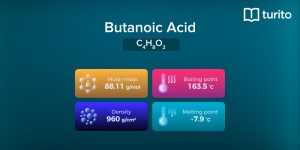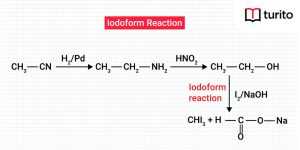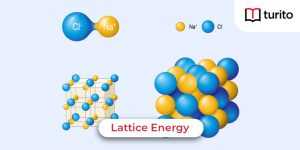You may have learnt about sour and bitter substances. These tastes are due to acids and bases in food items. Sometimes you may have heard a member of your family or neighbours saying that they are facing acidity issues because of overeating.
To treat their situation, some people suggest home remedies such as juices, vinegar, lemon water, baking soda solution, etc. but have you wondered why these remedies help the person with his acidity problems? Which property do you think of when selecting these remedies? These remedies include bases. As you know, in Chemistry, bases are classified into different categories. They can be strong and weak.
This article is about base substances and their properties, getting the answer to what is a weak base and a strong base, get examples of weak bases, and many other questions related to base substances.
What Is a Weak Base?
Some substances, when you taste them, feel bitter. Generally, they are called bases or alkalis. In Chemistry, substances that release OH– ions when dissolved in water are called the base.
There are some more definitions for the bases. Some of them are
- Molecules or ions that can accept H+ (or hydrogen) ions and form acids are called bases.
- A substance that tastes bitter and feels slippery on touching bases.
- Those chemicals that convert red litmus solution (or paper) into blue are called bases.
Now, the question is, what are a weak base and a strong base? And how do you differentiate them? Let’s dive into these questions. In answering what a weak base is, it can be described as a substance that, when dissolved in water, does not break completely into its constituent ions.
Weak bases have some other properties, such as their solutions being poor conductors of electricity. They are also categorised as weak electrolytes. In contrast to weak bases, strong bases dissociate completely in their aqueous state. They are good or upright conductors of electricity and are also known as strong electrolytes.
What Is a Weak Base in Terms of Equilibrium?
The weak base ions do not completely dissociate in the aqueous solution. During the ionisation of a weak base, a chemical equilibrium takes place. This equilibrium state establishes between the concentration of the undissociated base and its constituent ions. Remember that a poor base’s conjugate acid is always a poor one. In the same way, the conjugate base of a poor acid also acts as a poor base.
When you dissolve a weak base in water, the equilibrium arises, given as
B + H2O ⇌ BH+ + OH– (B is for any weak base)
In this equilibrium reaction, an electron pair on the basic molecule accepts a proton H+ From the water molecule. As a result, the formation of a hydroxide ion (OH–) takes place. As the concentration of reactant increases, the equilibrium will shift towards the right side and base ions start to form. The higher the reactants’ concentration, the weaker the base form. Similarly, the greater the concentration towards the right side of the equilibrium, the stronger the base.
Some Examples of Weak Bases and Strong Bases Used in Daily Life
Several examples of weak bases and strong bases that you have used in your daily life, whether knowingly or unknowingly.
Weak bases:- Magnesium hydroxide as antacids, ammonia as rocket fuel, aluminium hydroxide as deodorant, etc.
Strong bases:- Alkaline batteries, lubricating grease, soap, baking soda, etc. Pure water can act as a poor base and a poor acid. Some other common examples of bases are Vegetables and fruits such as watermelon, kiwi, etc.
Classification of Bases
Bases are also classified into different categories based on their concentration, strength, and acidity.
1. Classification of Bases Based on their Concentration:
- Concentrated Base: If in a solution form, the concentration or percentage of the base is higher than the solvent they are dissolved in, the base solution is termed the concentrated base solution.
- Dilute Base: If in a solution form, the concentration or percentage of the base is lower than the solvent they are dissolved in, the base solution is termed the diluted base solution.
2. Classification of Bases Based on their Strength:
- Strong base: If the aqueous solution of the base is completely ionised or the bonds between the ions in a base molecule get completely released, the base solution is termed a strong base.
- Weak base: If the aqueous solution of the base is incompletely ionised or the bonds between the ions in a base molecule are not completely released, the base solution is termed a weak base.
3. Classification of Bases Based on their Acidity with some Examples of Weak Bases and Strong Bases:
- Monoacidic base: If one hydroxyl ion reacts with only one hydrogen ion in an electrolyte solution, the base formed is termed a monoacidic base. For instance, NaOH, etc.
- Diacidic base: If in an electrolyte solution, two hydroxyl ions react with two hydrogen ions, the base formed is termed a diacidic base. For instance, Ca(OH)2, etc.
- Triacidic base: If three hydroxyl ions react with three hydrogen ions in an electrolyte solution, the base formed is called a triacidic base. For instance, Fe(OH)3, etc.
Weak Bases List
Depending upon the classification of bases, the given below is a weak bases list.
- Ammonia (NH3)
- Lead hydroxide (Pb(OH)2)
- Aluminium hydroxide (Al(OH)3)
- Copper hydroxide (Cu(OH)2)
- Ferric hydroxide (Fe(OH)3)
- Trimethylamine (N(CH3)3)
- Zinc hydroxide (Zn(OH)2)
- Aniline (C6H5NH2)
- Methylamine (CH3NH2)
- Pyridine( C5H5N)
Uses of Some Common Bases
You have used many bases in your daily life for various purposes. Some of these bases and their uses are given below:
-
Sodium Hydroxide, NaOH:
It is used to manufacture soaps, textiles, paper, and detergents, refine petroleum, and unblock the home’s drains. It is also helpful as a soda solution.
-
Calcium Hydroxide, Ca(OH)2:
One of the products of this base is lime water. It is used to prepare dry mixes for painting and decorating, manufacture bleaching powder, and neutralise soil acidity. It is one of the chief ingredients in whitewash and mortar.
-
Magnesium Hydroxide, Mg(OH)2:
It is commonly used in producing laxatives, gastritis drugs (ulcer drugs), and toothpaste.
-
Urea, H2NCONH2:
It is used in the production of chemical fertilisers.
-
Ammonium Hydroxide, NH4OH:
It is used to manufacture fertilisers, plastics, rayon, and dyes and as a chemical reagent.
Properties of Some Common Bases
| Name of the Base | Chemical Formula | Molar Mass | Density | Melting Point |
| Aluminium hydroxide | Al(OH)3 | 78 g/mol | 2.42 kg/m3 | 300℃ |
| Lead hydroxide | Pb(OH)2 | 241.21 g/mol | 7.41 g/cm3 | 135℃ |
| Ferric hydroxide | Fe(OH)₃ | 106.867 g/mol | 4.25 g/cm3 | 135℃ |
| Copper hydroxide | Cu(OH)2 | 97.561 g/mol | 3.37 g/cm3 | 80℃ |
| Zinc hydroxide | Zn(OH)2 | 99.424 g/mol | 3.05 g/cm3 | 125℃ |
| Trimethylamine | N(CH3)3 | 59.11 g/mol | 670 kg/m3 | -117.20℃ |
| Aniline | C6H5NH2 | 59.11 g/mol | 1.02 g/cm3 | -6℃ |
| Pyridine | C5H5N | 79.1 g/mol | 982 kg/m3 | -41.6℃ |
| Lithium hydroxide | LiOH | 23.95 g/mol | 1.46g/cm3 | 462℃ |
Ammonia Weak Base
Ammonia’s NH3, is an organic compound covalently bonded with hydrogen atoms forming a tetrahedral geometry. Ammonia’s weak base is easily recognised due to its pungent smell. Under normal temperature and pressure, it exists as a colourless gas.
Applications:
Ammonia weak base is commonly used to produce urea fertiliser mixtures, medicines, rocket fuels, battery manufacture, fuel, explosive materials, plastic paper, and household appliance cleaners.
Physical Properties:
Ammonia’s weak base occurs naturally in the environment like soil, air, plants, water, and animals. It has a boiling point of -33.34℃ and a melting point of -77.73℃. The molar mass of ammonia is 17.031 g/mol and has a density of 0.73 kg/m3.
Conclusion
To conclude, it is said that a weak base does not fully ionise or accept hydrogen ions (H+ions) in an aqueous solution. Bases have a pH greater than 7. pOH is calculated for the base solutions instead of pH. The dissociation constant for weak bases is always lower than for strong bases, and it determines the strength of a base. Weak bases can create buffer solutions, just like weak acids.
Frequently Asked Questions
1. What is a weak base characteristic?
The characteristics of a weak base are
- Having hard to disconnect interionic bonds.
- The solution is hard to ionise.
- Having partial ionisation. When dissolved in water, only a portion of its molecules break down into OH‑.
- The interionic bonds are difficult to disconnect due to the space among nuclei atoms in very near molecules.
2. What are the properties of a weak base?
A weak base has many properties that help to identify them. Some of them are
- The substance carrying a weak base has a pH of more than 7.
- A weak base is capable of making changes to its indicator’s colour.
- Weak base sometimes causes irritation and skin burning.
- It is bitter and shiny on the skin.
- Although weak, they conduct an electric current.
- A weak base can neutralise weak acidic solutions.
3. How does the base help in neutralising acidity?
A gastritis drug contains the base solution. When this gastritis drug enters the stomach, it neutralises the hydrochloric acid present in the stomach that causes acidity. Salt and water are produced as a reaction, and you feel relief from the acidity problem.
4. What are some examples of weak bases?
Magnesium hydroxide as antacids, ammonia as rocket fuel, aluminium hydroxide as deodorant, etc.
5. Is NaOH a weak base?
No, NaOH is not a weak base, it is a strong base because it totally ionises in aqueous solution and produces OH + and Na + ions there.
6. What are the 6 weak bases?
Ammonia, Copper hydroxide, Aluminium hydroxide, Methylamine, Zinc hydroxide and Lead hydroxide are the 6 weak bases.

Relevant Articles
Butanoic Acid – Structure, Properties, Uses
Butanoic Acid The carboxylic acid, butanoic acid, has the structural …
Butanoic Acid – Structure, Properties, Uses Read More »
Read More >>What is Iodoform? Characteristics and Uses
Iodoform The formula for Iodoform is CHI3. It is biotic …
What is Iodoform? Characteristics and Uses Read More »
Read More >>Lattice Energy – Explanation, Factors & Formulas
Lattice Energy Lattice energy evaluates the intensity of the ionic …
Lattice Energy – Explanation, Factors & Formulas Read More »
Read More >>Lead Acetate – Definition, Properties, Uses
Lead Acetate Have you ever licked lipstick when you sketch …
Lead Acetate – Definition, Properties, Uses Read More »
Read More >>Blogs
Is 34 a Good ACT Score? How Can I Improve It?
Let’s look at the average ACT score you’ll need for a great application and how you may improve it.
How Much Do AP Tests Cost? Everything You Need to Know
Students may be eligible for both types of rewards based on their AP exam scores and the college’s policies.
Best Online Coding Classes For Kids
Coding has become a vital piece of a kid’s education and a wonderful opportunity for them to display their creativity and ingenuity.
















Comments: